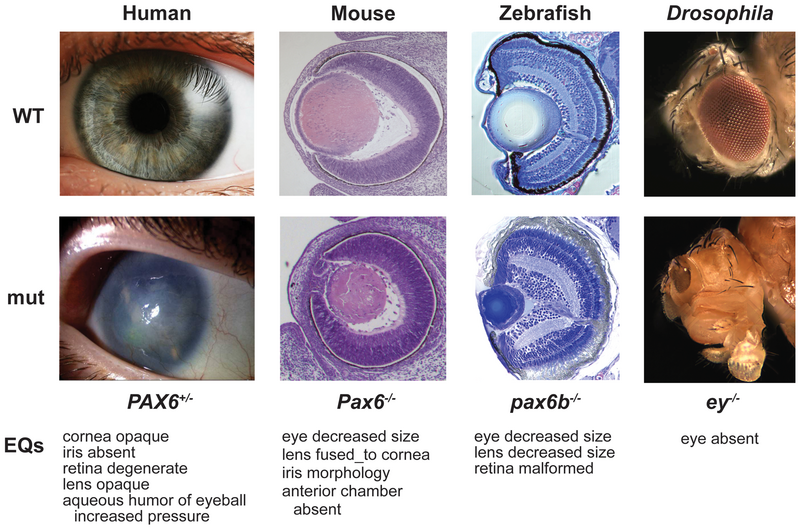Archivo:PAX6 Phenotypes Washington etal PLoSBiol e1000247.png
Apariencia

Tamaño de esta previsualización: 800 × 530 píxeles. Otras resoluciones: 320 × 212 píxeles · 640 × 424 píxeles · 1024 × 678 píxeles · 1280 × 848 píxeles · 2983 × 1976 píxeles.
Ver la imagen en su resolución original (2983 × 1976 píxeles; tamaño de archivo: 4,72 MB; tipo MIME: image/png)
Historial del archivo
Haz clic sobre una fecha y hora para ver el archivo tal como apareció en ese momento.
| Fecha y hora | Miniatura | Dimensiones | Usuario | Comentario | |
|---|---|---|---|---|---|
| actual | 21:22 28 nov 2009 |  | 2983 × 1976 (4,72 MB) | TenOfAllTrades | {{Information |Description={{en|1=Phenotypes of wild-type (top) and PAX6 ortholog mutations (bottom) in human, mouse, zebrafish, and fly can be described with the EQ method. EQ annotations of the abnormal phenotypes are listed below each set of images per |
Usos del archivo
Las siguientes páginas usan este archivo:
Uso global del archivo
Las wikis siguientes utilizan este archivo:
- Uso en ar.wikipedia.org
- Uso en bs.wikipedia.org
- Uso en ca.wikipedia.org
- Uso en de.wikipedia.org
- Uso en en.wikipedia.org
- Genotype–phenotype distinction
- Evolutionary developmental biology
- Homology (biology)
- PAX6
- Portal:Evolutionary biology
- Deep homology
- User:Daniel Mietchen/Talks/Wikimania 2012/National Center for Biotechnology Information/Wikimedia/Open Access File of the Day
- Wikipedia:WikiProject Open/Open access task force/Wikimedia at OAI8/Barriers to reuse of Open Access materials
- Uso en gl.wikipedia.org
- Uso en ja.wikipedia.org
- Uso en outreach.wikimedia.org
- Uso en ru.wikipedia.org
- Uso en zh.wikipedia.org

